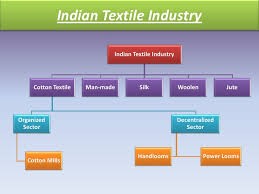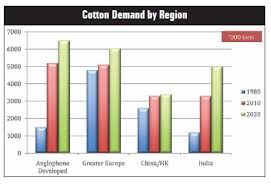
The textile industry is one of the earliest industries, which have been developed in India. These industries have been very potential and cover a large sector of employment opportunity at a global level, it also, own an entire value chain from fibre to apparel manufacturing within the country or in others country. Although in many developing countries like India, agriculture is the biggest source of activity but after the agriculture, textiles Industries is at a second-place which provided the largest number of employment services. It provides direct employment to approximately 4.5 crore people.
Related Projects:- Textile, Apparel, Clothing, Denim wear, Innerwear, Lingerie, Hosiery, Denim Jeans, Readymade Garments and Under Garments Industry.
NPCS’s play a very crucial role for setting-up of textile industries in any sphere, provides a complete analysis from market demand to investment source.
Demand:
In the world, India is one of the second-largest manufacturers in terms of textiles and clothing. India’s total contribution in textile and global apparel of 5% of global trade and it became the second-largest exporter of textiles at a global level. The textile Industries covers an export of different textile and clothing products, which also, included handicrafts. During the time period from 2018–19, India has slightly increased to US$ 40.4 billion from US$ 39.2 billion during 2017–18, when acquired growth was of 3%. At a global level, India ranks behind China. Its total shares are approximately 38% of the global textile and clothing trade. In 2018–19 India’s total share of textile and clothing in exports stood at 12%. Some growing countries are India’s EU-28 and the United States, with 48% total textile and apparel export are major textile and apparel export destinations.
Related Projects:- TEXTILE BLEACHING, DYEING, SPINNING, WEAVING, PRINTING, FINISHING AND TEXTILE AUXILIARIES PROJECTS
Availability of Raw materials:
India is one hub place for providing the raw materials, it provides a very strong raw material base both in natural and manmade fibres (MMFs). In 2017–18 India was one of the emerging countries in terms of the largest producer of cotton in the world, its production rate was at a production of 370 lakh bales and become the second-largest exporter of cotton.
India has a strong presence in global exports of cotton yarn. Between 2012 to 2016 Vietnam has increased its global export share of cotton yarn from 5% to 15%. China and Bangladesh are the largest importers of cotton yarn from India, who in turn creates value addition to the yarn and then exports the same at a lower cost compared to India. India needs to upgrade its position from a supplier of cotton yarn to a producer of value-added fabrics and garments. As the world export value of cotton yarn has decreased over the years, it is an indication that the cotton textile trade is shifting towards different types of fibre such as MMF. Textile Industry in itself is a very vast Industry, it required different kinds of raw material such as Fibre, Yarn, Fabric and dyes.
NPCS’s detailed project report of textile industries emphasis the major source of textile industries from root cause to complete establishing oriented.
Market Size:
In FY19 total contribution of India’s textiles industry is approximately seven per cent of the industry output (in value terms). In FY19 total contribution of textile industries was 2% of GDP of India and generated total employment for more than 45 million people. For India’s export earning total contribution of India’s textile industry was 15 per cent to India’s export earnings. In a handloom sector alone has a total of 35.22 lakh handloom workers and textiles industry has around 4.5 crore employed workers. During the last five years, the textiles sector has witnessed a spurt in investment. The industry (including dyed and printed) attracted Foreign Direct Investment (FDI) worth US$ 3.44 billion from April 2000 to March 2020.

Related Videos:- Textile Industry
Investment source:
For bringing your textile industry at large scale, there are high needs for focusing on investment sources. In India, this will give the surety of rapid transformation of the weaving sector. As per Amended Technology Upgradation Funds Scheme (ATUFS) of the Indian Government, the weaving sector will easily get capital subsidy for the garments and technical textiles. In a present scenario, the weaving sector is getting approximately 10% of subsidy at 20 crore fund sanction. And for the garments and technical textiles, there is 15% subsidy is provided at a 30 crore.





